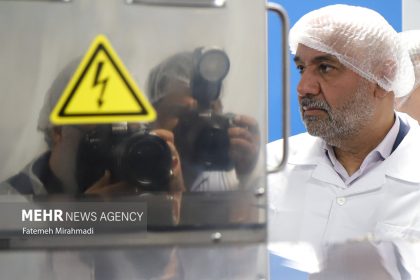A super -sensitive -based test of Crisper can detect pathogenic agents in the blood with a sensitivity of millions of times more sensitive.
According to RCO News Agency, Researchers at the University of Illinois have transformed the Crisper gene editing method into a rapid diagnostic test that can detect pathogens and blood -death agents with unprecedented sensitivity and minimum laboratory work needed.
Quoted by Adons Sinz News, The world became acquainted with the strong technology of Chrisper gene editing in year 6. Crisper, which was discovered in bacteria several decades ago, is a cluster sequence of open DNA pairs used by bacteria to identify and connect the virus DNA strands. A group of enzymes called CAS, after connecting, cut the virus DNA and make it harmless.
Researchers found that Crisper and CAS enzymes can be changed to identify and cut the desired DNA sequences and make it a strong and accurate way to edit gene editing. Even Chrisper, with a few other changes, can also become a quick and accurate diagnostic method. Rashid Bashir, a professor of biological engineering at the University of Illinois, explained: One of the strong features of Crisper is its ability to find very special DNA sequences and connect to them.
The ability to diagnose DNA sequences converts Crisper into a useful way to diagnose because it can effectively find DNA pathogenic agents in the blood. Bashir continued: Some of the Crisper enzymes such as the Cas2a have a special ability because by identifying their desired DNA, they begin cutting the adjacent single -discipline DNA. By incorporating special molecules at the end of the small DNA sequences when cutting, we can turn the CRISPR enzyme into a very special sensor that can produce light in the presence of a particular pathogen.
One of the problems is the detection of low light values produced by these microscopic reactions. Initially, researchers such as Bashir must reinforce the signal using methods such as PCR that selectively produce thousands of copies of a small amount of DNA. This process requires special equipment and takes several hours. The need to reinforce the signal reduced the speed and mobility of the test because the samples had to go to the laboratory and reproduce.
Pre -stroke reduced the sensitivity of the test because the DNA should have been artificially increased to see the signal. This aroused Bashir and his colleagues to ask themselves: What if we could develop a system that works without any prejudice?
In order for the fluorescent signal to be recognizable without reinforcement, the researchers created a two -step process. Bashir explained: The first part seeks DNA pathogenic agents. If it finds the goal, the second reaction begins, which acts as a chain reaction and continuously increases the signal.
The second reaction relies on a molecule designed by the research group and is cut by CRISPR enzymes after finding DNA. Bashir said: After cutting, more elements will be released that direct the next round of the signal and form a positive feedback ring. With only a few copies of DNA, a pathogenic agent, the system can produce a strong diagnosis signal without the need for any previous reinforcement.
Researchers, using blood containing a variety of bacterial and viral factors, including hepatitis B and staphylococcus aureus, resistant to methicillin, bacteria responsible for drug and fatal infections, found that the test provides clear and accurate results in just 5 minutes. Also, experiments confirmed the improved sensitivity of the method.
The research team is now trying to improve this method because it still needs a sample preparation stage where the DNA in the sample is extracted. “We are actively working on ways to integrate this method or by completely bypassing some steps,” Bashir said.
The study was published in the journal PNAS.
The end of the message
(tagstotranslate) Chrisper (T) Pathogens (T) experiment
RCO NEWS

















